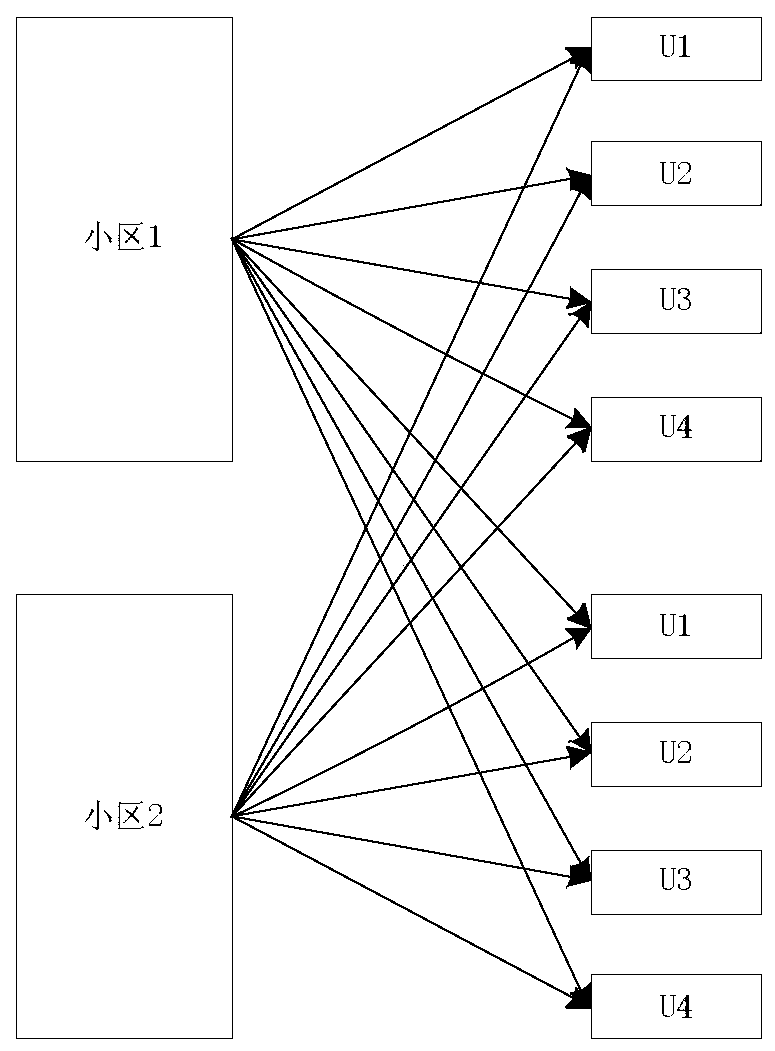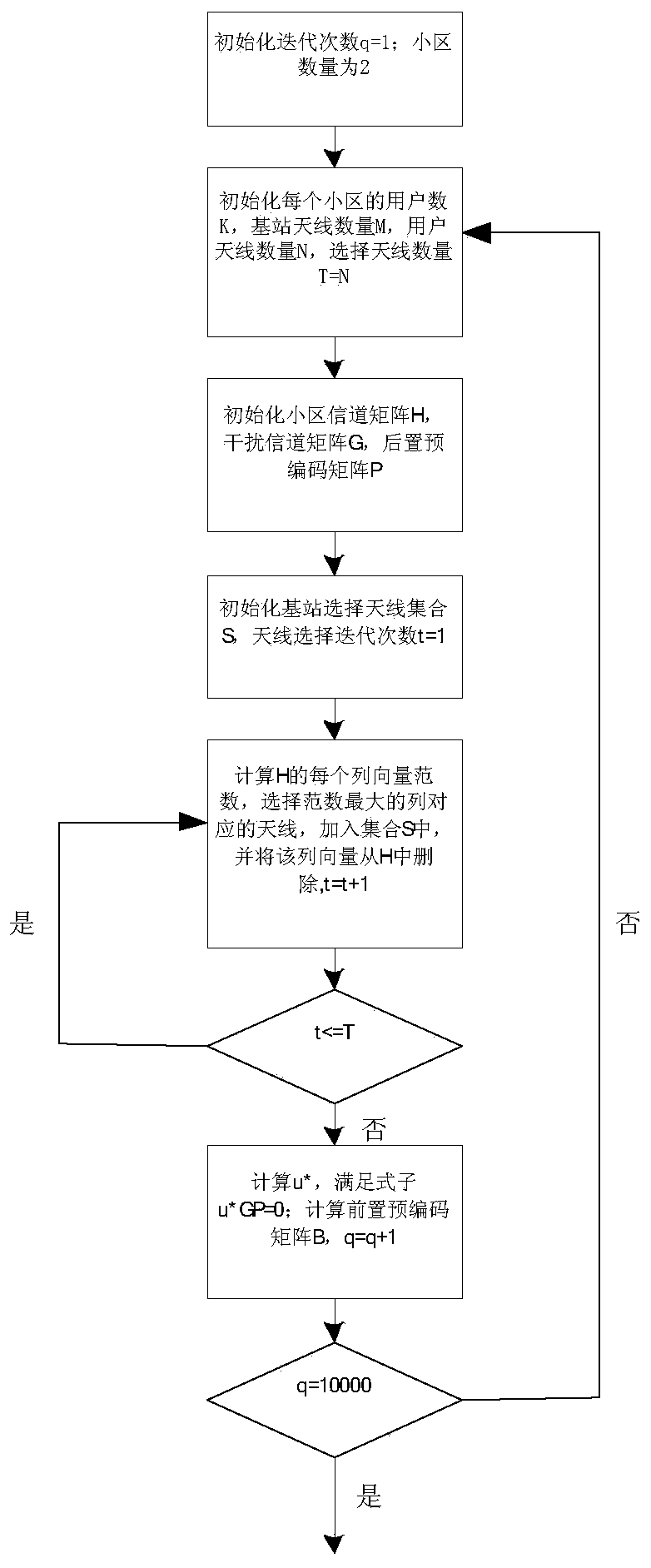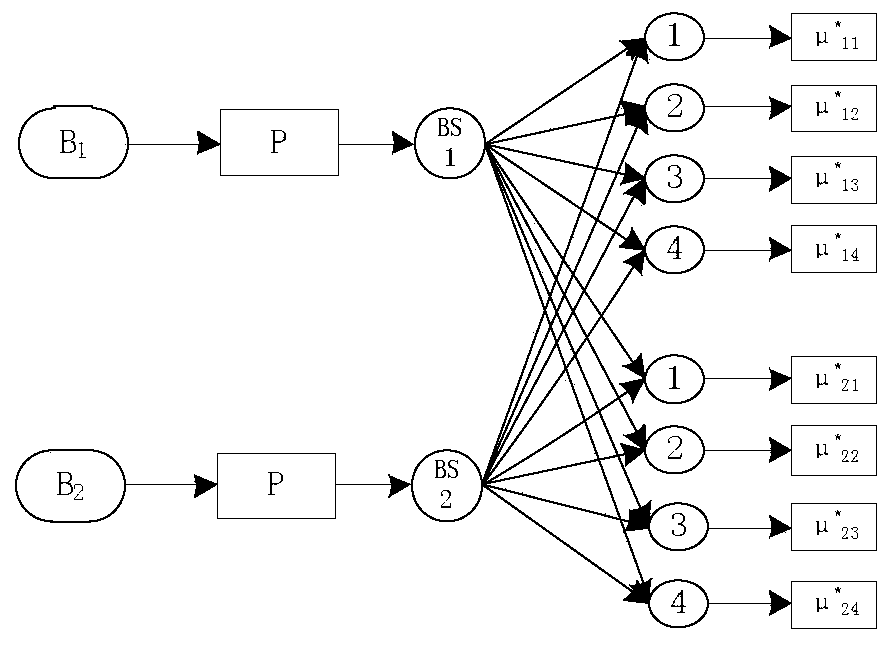An Interference Alignment Method Based on Antenna Selection
A technology for interference alignment and antenna selection, applied in baseband systems, baseband system components, radio transmission systems, etc., can solve problems such as increased complexity of methods, and achieve the effect of reducing the amount of information and reducing hardware costs
- Summary
- Abstract
- Description
- Claims
- Application Information
AI Technical Summary
Problems solved by technology
Method used
Image
Examples
Embodiment Construction
[0032] Below in conjunction with accompanying drawing, technical scheme of the present invention is described in further detail:
[0033] figure 1 It is the equivalent interference channel diagram of the 2-cell K-user system applicable to the present invention. In this case, 2 cells are used, each cell serves 4 users, and the base station and users are respectively equipped with 50 and 5 downlink channel scenarios. The system works in downlink. Each base station will cause interference to users outside the cell, the system model is as follows figure 1 As shown, the process is as follows figure 2 As shown, taking cell 1 as an example, the specific implementation steps are:
[0034] (1), the number of initialization iterations q=1, the number of cells is 2;
[0035] (2) The number of users in each cell is initialized as K=4, the number of antennas configured by the base station is M=50, the number of antennas configured by each user is N=5, and the number of selected transm...
PUM
 Login to View More
Login to View More Abstract
Description
Claims
Application Information
 Login to View More
Login to View More - R&D
- Intellectual Property
- Life Sciences
- Materials
- Tech Scout
- Unparalleled Data Quality
- Higher Quality Content
- 60% Fewer Hallucinations
Browse by: Latest US Patents, China's latest patents, Technical Efficacy Thesaurus, Application Domain, Technology Topic, Popular Technical Reports.
© 2025 PatSnap. All rights reserved.Legal|Privacy policy|Modern Slavery Act Transparency Statement|Sitemap|About US| Contact US: help@patsnap.com



